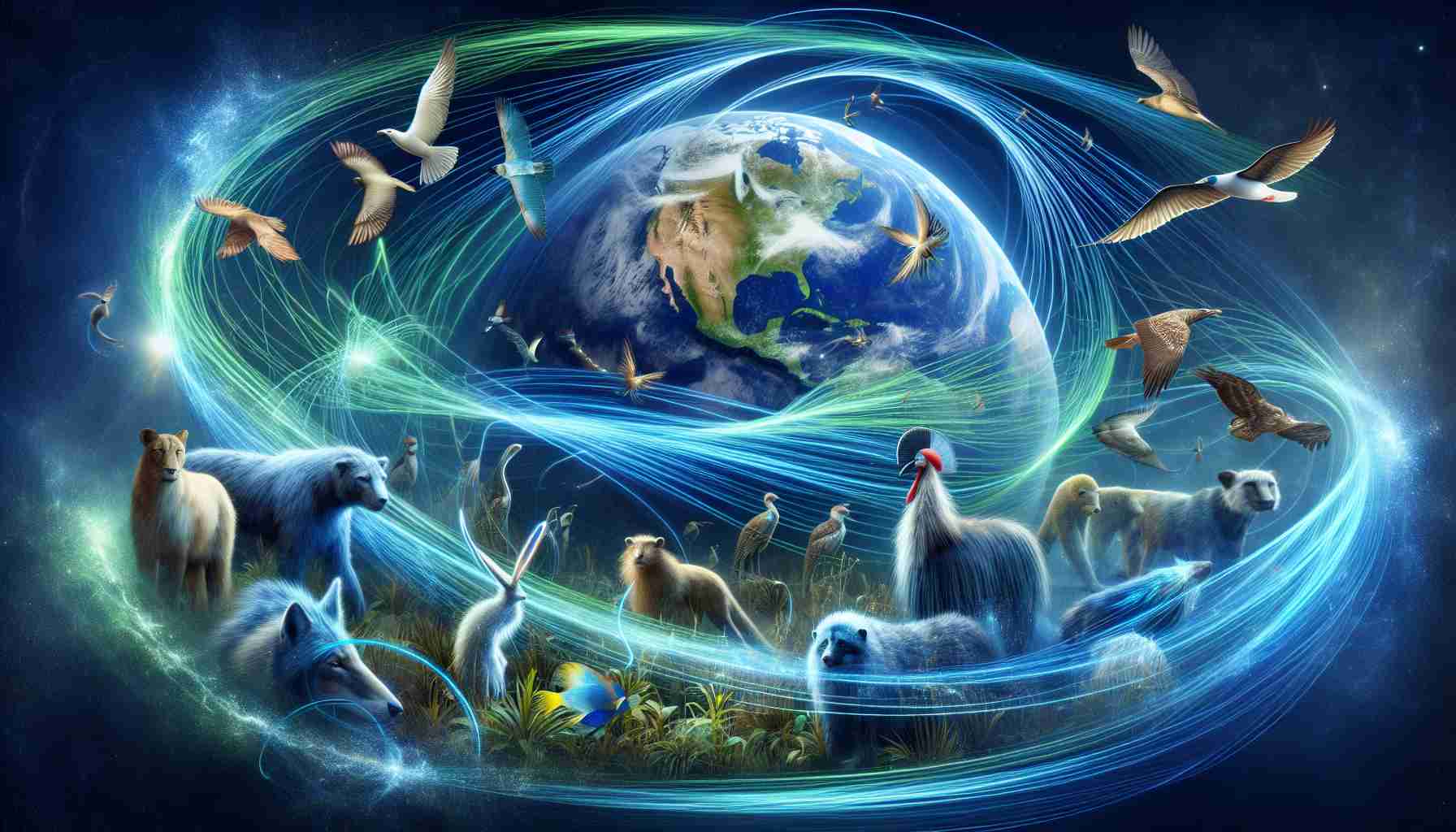- Magnetoreception is a remarkable ability in animals to detect Earth’s magnetic fields.
- Recent studies have discovered biological mechanisms that operate near quantum limits for magnetic detection.
- Animals utilize three primary mechanisms for magnetoreception: induction mechanism, radical-pair mechanism, and magnetite mechanism.
- The induction mechanism converts magnetic energy into electrical signals, influencing an animal’s balance.
- The radical-pair mechanism involves unpaired electrons affected by magnetic fields, facilitating navigation.
- The magnetite mechanism relies on iron crystals, providing precise direction sensing for various species.
- Insights from these biological systems could lead to advancements in magnetometer technology and enhance our understanding of magnetism in nature.
Delve into the astounding world of magnetoreception, where animals possess an extraordinary ability to perceive Earth’s magnetic fields. Recent discoveries by physicists at the University of Crete have unveiled that at least two biological mechanisms have nearly reached the quantum limits of magnetic field detection, providing inspiration for next-generation magnetometer technology.
Imagine navigating without GPS, solely relying on the Earth’s compass! For millennia, humans have used iron to guide their journeys, but nature has devised even more ingenious solutions. From the tiniest hair cells in birds’ ears to mystical molecules in their retinas, animals harness various complex systems to interact with magnetic energy.
Research reveals three primary methods animals might utilize to grasp this unseen force. The induction mechanism converts magnetic energy into electrical signals, potentially influencing a bird’s balance. Meanwhile, the radical-pair mechanism plays a vital role in how some species perceive magnetic fields, involving a dance between unpaired electrons under magnetic sway, affecting chemical reactions crucial for navigation.
Lastly, the magnetite mechanism uses tiny iron crystals, allowing microorganisms and animals to sense direction with astonishing accuracy.
Though ongoing explorations cast a speculative light on these findings, the implications are profound. By integrating these biological insights into future technological advancements, we could discover innovative ways to detect even the faintest magnetic signals. As research continues to unfold, it might just unlock new frontiers in understanding how life on Earth brilliantly adapts to the cosmic ballet of magnetism overhead.
Unlocking Nature’s Compass: How Magnetoreception is Shaping Technology and Understanding the Animal Kingdom
Understanding Magnetoreception
Magnetoreception is the ability of animals to perceive magnetic fields, and recent advancements in this field reveal fascinating insights about both animal behavior and potential technological applications. Physiologists and physicists are investigating how different species utilize this ability to navigate their environment, leading to breakthroughs in magnetometer technology.
Innovative Mechanisms of Magnetoreception
Recent studies indicate that there are at least three primary biological mechanisms through which animals can detect magnetic fields:
1. Induction Mechanism: This process involves the conversion of magnetic energy into electrical signals that can influence a bird’s balance and spatial orientation.
2. Radical-Pair Mechanism: In this sophisticated system, unpaired electrons react to magnetic fields, affecting chemical reactions that are essential for navigation, particularly in migratory birds.
3. Magnetite Mechanism: Some animals, including certain microorganisms, utilize tiny iron crystals to detect the Earth’s magnetic field, which provides extraordinary accuracy in directional sensing.
Limitations and Challenges
While the potential applications of magnetoreception are promising, there are limitations. Current scientific understanding is not yet comprehensive; the exact ways different species employ these mechanisms remain largely speculative. Moreover, replicating biological sensitivities in practical technology poses a significant engineering challenge.
Future Trends and Innovations
The implications of these findings suggest exciting trends for the future:
– Technological Advancements: Insights from magnetoreception may inspire next-generation magnetometer design and improve navigation devices, possibly augmenting or replacing GPS technology.
– Market Forecasts: There may be substantial growth in industries focused on navigation technology, biomimicry, and sensing devices.
– Sustainability Insights: Utilizing natural mechanisms for navigation could reduce reliance on battery-powered devices, contributing to more sustainable practices.
Frequently Asked Questions
1. How do animals use these mechanisms for navigation?
Animals employ these mechanisms in various ways to navigate, often during migration. For instance, birds might use the radical-pair mechanism in their eyes to sense magnetic fields, helping them determine their positioning relative to the Earth’s magnetic poles.
2. What are the potential applications of understanding magnetoreception?
Understanding magnetoreception can lead to advancements in technology, such as creating more sensitive and accurate magnetic sensors for applications in navigation, geology, and environmental monitoring.
3. Are there any known controversies surrounding magnetoreception research?
Yes, while there is significant evidence supporting the existence of these mechanisms, some scientists debate the exact processes involved. The interpretations of how these biological systems integrate with other sensory modalities are still under investigation.
For more information about magnetoreception and related technological advancements, you can visit Science Daily for the latest research updates.













